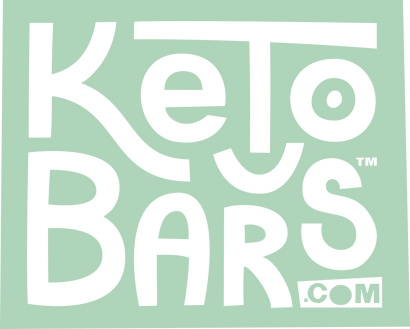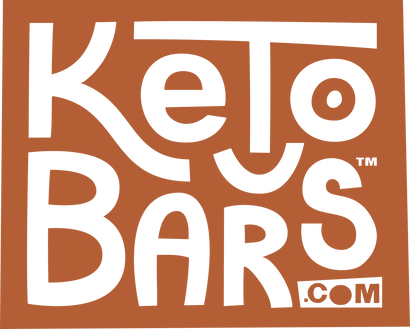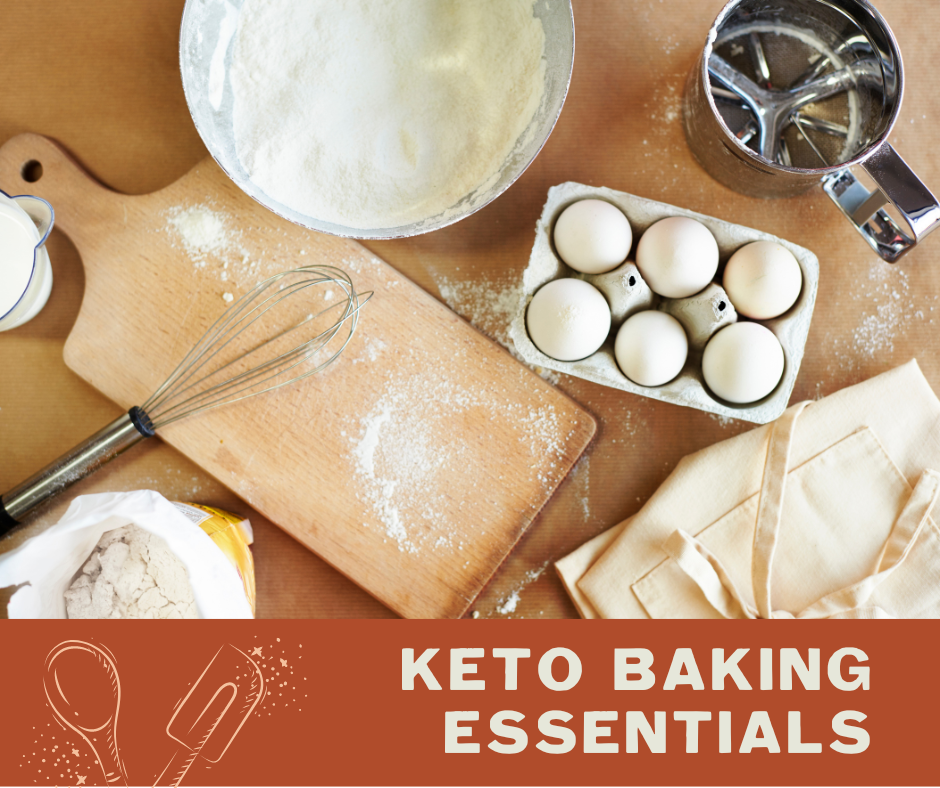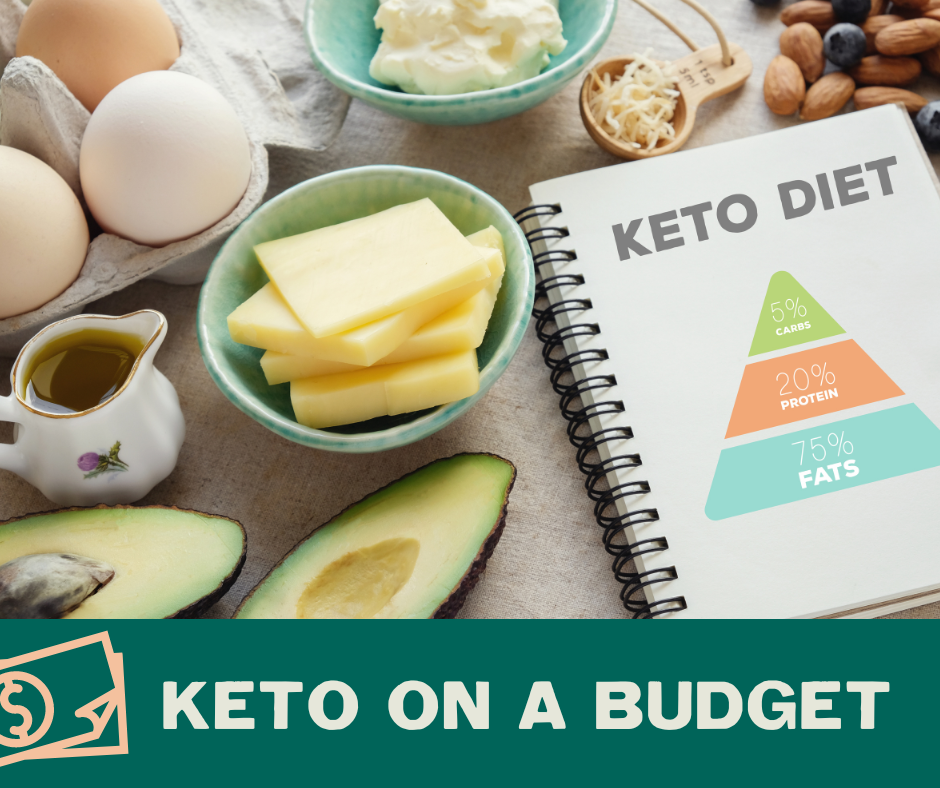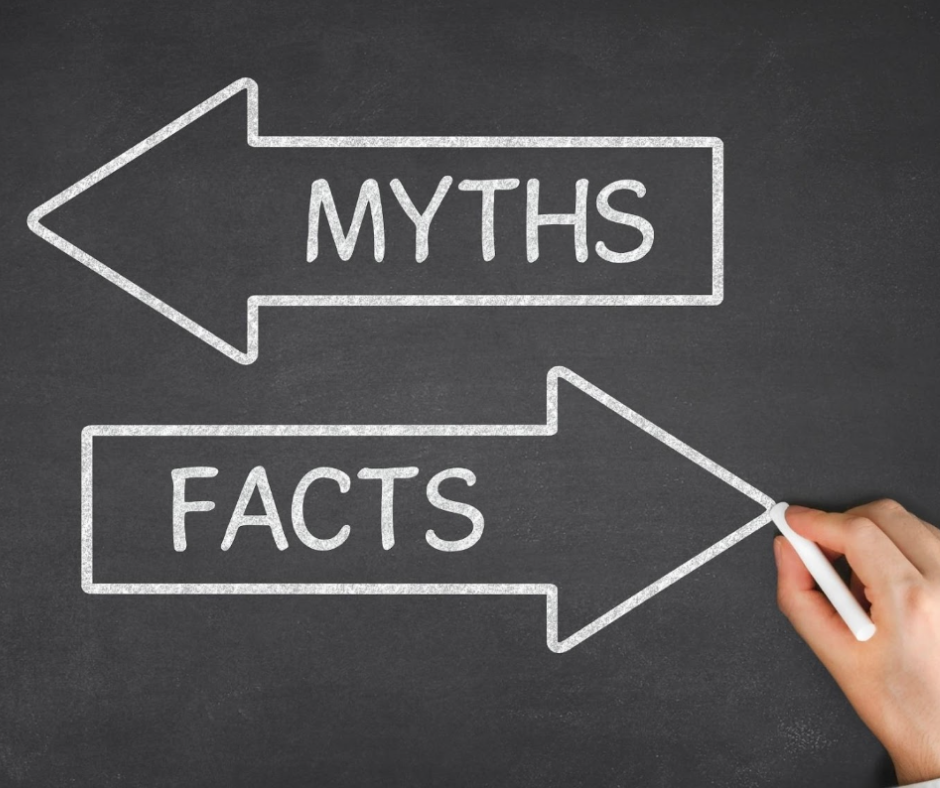Working Out On Keto: A Complete Guide

It's tempting, when starting a new diet, to plunge head-first into everything at once. You want to lose weight as quickly as possible, so you stock up on all your new diet foods and plan to hit the gym hard every day until you reach your goal. While this might feel right to you, it's really the worst way to start any new weight loss plan – including the keto diet.
The keto diet is a low-carb, high-fat diet plan that, if done correctly, turns your body into a fat-burning machine. After days (sometimes weeks) of eating this way, your body makes the switch from burning glucose to burning ketones for fuel. Combining exercise with the keto diet will maximize the health benefits and weight loss benefits of the keto diet while still maintaining lean body mass. Exercise helps maintain blood sugar levels and improves insulin sensitivity, all of which helps increase the efficacy of the keto diet. The problem is, your muscles use glucose when performing certain types of exercise.
So how do you exercise on the keto diet? What's the best way to accelerate fat loss if exercising the way you're used to isn't going to work? Let's discuss the effects of the keto diet on your exercise performance, what to keep in mind when launching an exercise plan alongside the keto diet, and how to get the results you want in the gym.
How To Launch An Exercise Plan On The Keto Diet
If you've ever done the ketogenic diet before, you know that the beginning of the diet is the hardest part. The transition from burning glucose to burning ketones as your main fuel source can be a bit brutal if you're not careful. That's because as your glycogen stores decrease, your body feels like it's running out of energy. If you transition too quickly away from a high-carb diet, you can experience symptoms of the keto flu. These symptoms include exhaustion and lack of energy, brain fog, muscle cramping (likely due to dehydration), and irritability. You're most likely to experience these things at the very beginning of your transition, and once you become keto-adapted, they'll subside.
This is important information because, depending on how you approach your exercise, it can either relieve or make worse the symptoms of the keto flu. Choosing the right types of exercise as you make your way into a state of ketosis will help you stay on track with as little pain and discouragement as possible.
Start Low And Slow
Transitioning to the keto diet is hard enough on its own without adding hard-core workouts into the mix. In the first week or two of your transition (depending on your energy levels and how your body feels), it's important to focus on lower-intensity workouts.
Low and slow means low-intensity aerobic exercises like rowing, walking, or biking (not spinning or speed-cycling, just a steady bike ride). It's important for you to move and get your heart rate up, but just as important for you not to overdo it. Light to moderate exercise at the beginning of this diet plan will help deplete your glycogen stores more quickly, which will help you reach ketosis more quickly – a great end result without making you feel terrible in the process.
Slower activities that nourish your body like stretching, rolling, and stability work are also great activities to start with as your transition into the ketogenic diet. Stretching and rolling help reduce and prevent muscle cramping (as does drinking lots of water), and stability work, like balance exercises and core training, helps keep your muscles engaged but not pushed to the max. Yoga, which incorporates both stretching and stability work, is a great way to move your body at the beginning of the keto diet.
High-intensity workouts or heavy weight lifting at the beginning of your transition, however, could make your keto flu symptoms worse. That's because these activities require a lot of energy from your muscles, which aren't optimized to keto yet. The effect of these more intense activities when you're not keto-adapted could mean more muscle cramping, lower performance, more exhaustion, and ravenous hunger. None of these things help you on your weight loss journey.
Steady Wins The Race
It can't be emphasized enough how important it is to know your body and listen to what it's telling you. This is true across all types of meal plans and workout routines, not just keto. Regardless of what type of change you're making, your body will be sending you signals along the way of what it can and can't do, what it does and doesn't like. How your body responds to changes will help you determine if you're on the right track.
In the case of exercise, as your body begins to use fat efficiently as your primary energy source, you'll be able to up the ante in the gym. As your energy level increases, so too can your activity level. But this is a gradual process – steady wins the race. If you're used to having super high physical performance in the gym, don't be discouraged if you're not back to your optimal level yet. It takes some time (and some strategic eating), but you'll get there. Some of the best activities for fat loss are low- to medium-intensity cardio, so continue with the brisk walks and moderate bike rides as you become more fat-adapted.
Extreme Efficiency
Once you're fully keto-adapted, it'll be easier to get back to your previous level of athletic performance. That being said, It's a tricky balance, as certain demanding physical activities still require glucose to fuel your muscles. Activities that require sustained maximal effort for anywhere between 30 seconds and 2 minutes will require glucose – ketones and fat won't work. So the sweet spots are on either side of those numbers: high intensity for fewer than 30 seconds (ATP for fuel) and moderate-intensity for greater than 2 minutes at a time (ketones and fat for fuel).
This isn't to say that you can't adapt your keto diet to do high-intensity interval training (HIIT) or CrossFit-type workouts on the keto diet, but you'll need to adjust your macros. It's also possible to do a modified HIIT-style workout that bypasses the need for glucose by making each interval last about 3 minutes. More on how to modify your diet in the next section.
The physiology behind how your body fuels your muscles makes heavy weight lifting and steady aerobic activity at 50-70% of your max heart rate are the best types of exercise for keto dieters. Weight lifting requires proper technique, so if you're not familiar with the best way to perform the movements, consider getting a training session or two at your local gym to make sure you don't hurt yourself. There are also lots of great resources online, including video content that can help you get started.
Calculating Your Fat Burning Heart Rate
The ideal heart rate for fat-burning is 50-70% of your maximum heart rate. This is considered "moderate exercise." Vigorous exercise takes your heart rate up between 70 and 85% of your max. While it's important for your cardiovascular health to get to that vigorous level from time to time, that 70% sweet spot will be the most optimal for your body when it's in a state of ketosis. That's because your body will be optimized to burn body fat. To calculate your maximum heart rate, subtract your age from 220.
For example, if you're 30 years old, your maximum heart rate will be 220-30=190 beats per minute (BPM). Your optimal heart rate for burning fat will be 70% of 190 or 133 BPM. Use a wrist monitor or chest monitor to help you stay in the zone while you're working out.
Weight Lifting

Weight lifting – a type of anaerobic exercise – is an important part of just about any fitness plan you'll find. Whether you're talking about using your own body weight in activities like pushups, pullups, or chin-ups, or moving free weights in the case of squats or bench press, pushing your muscles to move weight will put your fitness goals in the fast lane. This is true for both men and women.
While women tend to worry about weight-lifting causing them to bulk up, it's an unfounded concern. Women don't have enough natural testosterone to cause them to bulk up like a man when they lift weights. Even super heavy lifting won't do it without hormonal supplementation. Rather, weight lifting will not only help you tone up, the muscle you build will help optimize fat loss and get you to your goals a lot more quickly.
The most efficient way to use weight lifting to your metabolic advantage is to choose exercises that engage large muscle groups. These exercises include squats, lunges, overhead press, pullups, and bench press. While you certainly can add more focused exercises to strengthen smaller muscles or target your personal areas of concern, incorporating these strength training exercises into your routine will help you build muscle mass and optimize your metabolism.
The best way to lift weights and get stronger on the keto diet is to move heavy weight, 5 to 8 reps at a time for 3 or 4 sets with at least three minutes of rest between sets. The short sets keep your muscles from needing glucose, while the long rests allow your body to build up ATP for the next set.
High Intensity Interval Training (HIIT)
The idea behind HIIT is to go as hard as you can for a very short period (10 seconds to 2 minutes), then rest, then repeat. The end result is a workout that creates dynamic heart rate variability and turbo-charges your metabolism.
But in the case of keto dieters, HIIT workouts need to be performed strategically. If you keep the work intervals at under 10 seconds and allow for that longer 3-minute rest between sets, you can make HIIT work for you without your performance suffering. The other way to do it is to have longer, 3-minute work sets (and also 3-minute rests) to get your body into the aerobic state. (It's obviously a lot harder to go 95-100% for 3 minutes than it is to go for 10 seconds, so it's up to you!)
What won't work is the timing in between. Work sets that last between 15 seconds and 2 minutes will require glycogenesis to fuel your muscles, so you won't get the performance you're looking for while on the keto diet. You'll also get a lot more tired a lot more quickly. However, there are ways to adapt your diet to get the best of all worlds.
How To Eat While Exercising On The Keto Diet
Just like with many other weight loss plans, as you increase your physical activity on the keto diet, you'll also want to increase your caloric intake to make sure you're not starving your muscles. The type of calories is what's different about the keto diet vs others. Hardcore endurance athletes tend to carb load before a big workout. This strategy helps ensure that they have enough glycogen stores to fuel their muscles during intense training sessions. But keto is a very low-carb diet, so a big bowl of pasta the night before your big day is just going to kick you out of ketosis and make things harder down the line.
That's not to say that you can't (or shouldn't) slightly increase your carb intake if you're doing some heavy exercise. But it's also important to increase fat intake, and if you do plan to slightly up your carbs to help you sustain a solid HIIT workout or longer weight lifting session, timing is everything.
Targeted Ketogenic Diet
If you find that you're getting super exhausted during and after your workouts, you might consider making an adjustment to your macros. The targeted ketogenic diet approach (TKD) adds in 25-50 grams of carbs 30 minutes before your hard workout. This approach will temporarily lower your ketones, but if you combine it with MCT oil, which helps your body produce ketones and burn fat, then you will get back into ketosis more quickly after your workout.
The carbs you'll be eating if you plan to do targeted keto should be fat-free, low-fructose, very simple carbs. In any other context, these foods aren't considered "healthy" per se, but they'll get you the energy you need to fuel your workout. They include foods like gummy bears, hard candies, Gatorade, Powerade.
The other option is the cyclical ketogenic diet (CKD), which involves choosing a day or two a week to eat more carbs, but this approach is really more ideal for high-performing athletes and not really necessary for the average keto dieter.
Going Keto As An Average Exerciser
The reality is that most people using the keto diet for weight loss or blood sugar control aren't elite athletes. If your regular workout routine is a long walk with the dog or an hour of swimming laps, chances are high that you'll do just fine exercising on the standard keto diet. Making adjustments like TKD and CKD are more ideal for those who engage in high-intensity exercise, CrossFitters, and demanding sports. Even endurance athletes have been shown to be fine on the standard keto diet for the longer-term.
The most important thing to remember is to take exercise slowly if you're new to the keto diet. Understanding the process your body is going through to reach the fat-burning state of ketosis will help you moderate your activity until your body is ready to handle more. Start off with a gentle approach to help you reduce the amount of time you'll experience keto flu symptoms and lower your risk of making them worse. As you get more fat-adapted, you'll begin reaping all the benefits of the keto diet, and exercise will only move things along more quickly.
For a convenient way to stay on track with your keto diet, consider trying KetoBars. Visit KetoBars.com to browse our selection and find the perfect snacks to support your keto journey.

Toni Sicola
Toni is a wellness professional with a Master's in Integrative Health, is passionate about spreading health, happiness, and personal fulfillment to as many people as possible. She has a professional background in health and wellness, dietary supplements, and nutrition, and embarks every day to live a well, balanced, happy life.
Published: February 2, 2021
Love this blog post? Share it on social!
WHAT TO READ NEXT
Keto Myths That Make You Squeak
KETO MYTHS THAT MAKE US SQUEAK
Written by Tony Berardo on April 29th, 2022
Starting a new fitness program or changing your eating habits can be intimidating and confusing.
For decades we’ve been told that certain foods are bad for us. However, as more research is done, it turns out that some of those foods, like fat, could actually be very beneficial.
The goal of a ketogenic, or keto, diet is to get more of your calories from protein and fat than carbohydrates. This makes sense since we all know that carbohydrates from sugar, soda and pastries are not ideal for daily consumption.
You’ve probably noticed that you feel different after you eat these foods. Think about how you feel after eating a bunch of bread before your appetizers or a nice slice of cheesecake after your meal.
Just as not all carbs are bad, neither are all fats and sugar.
If you think a keto diet might be right for you, it’s important to distinguish the facts from the myths in order to achieve the best results and make your experience as stress free as possible.
MYTH: KETO IS ONLY USED FOR WEIGHT MANAGEMENT
As you would expect when eliminating certain foods from your diet, especially carbs, you will notice some weight loss. However, that is not the only change you will experience while on a keto diet. Following a proper keto diet has been shown to support overall metabolic health, body composition and improved cognitive function.
But can you gain weight while on the keto diet? As with any diet, weight gain is a possibility if the diet is not followed correctly. With a keto diet, weight gain could happen if you are not actually in a state of ketosis. If someone is following a diet and their caloric intake is less than their needs, they may lose weight over time. If their caloric intake is more than their needs, they may gain weight over time, even if the calories come from fat or protein.
This is why a ketogenic diet takes research and planning to ensure all the necessary steps are taken to achieve optimum results.
MYTH: EAT AS MUCH FAT AS YOU WANT
This is probably the most common myth. Although research has shown that some fats are very beneficial for a healthy lifestyle, it doesn’t mean that you should eat as much fat as you want. There is a difference between saturated and unsaturated fats, with unsaturated fats being the preferred type for a keto diet. On a keto diet, 75% of your daily calories should come from these unsaturated fat sources. Some good examples of those fats are nuts, fatty fish, eggs and avocado.
MYTH: GOING KETO MEANS ZERO ALCOHOL
Although beer and wine are generally full of carbohydrates, there are other options, like dry wines, light beers and most liquors, if you wish to indulge. Just watch out for those mixers and chasers! You may notice that your tolerance to alcohol changes, so always be sure to drink responsibly.
MYTH: IT’S A HIGH PROTEIN DIET
This is another common myth. As stated earlier, close to 75% of your daily calories should be coming from fat, not protein, which should only account for 20% of your caloric intake, with carbohydrates contributing the remaining 5%. If you’re having trouble meeting your fat, carb and protein goals, supplementation could be an easy way to stay keto-friendly. Whether you’re in between meals or hungry after a workout, Keto Bars has some delicious and filling Keto Bars and foods that will help keep you on track.
MYTH: KETO IS THE SAME FOR MEN & WOMEN
Although studies suggest women could be more sensitive to dietary changes than men, women can still safely follow a keto diet as long as they do so carefully.
It’s recommended that women focus on eating a clean, alkaline diet in addition to following a keto diet. This means that they should eat more non-starchy vegetables to ensure they are getting plenty of electrolytes and nutrients.
Of course, this advice should always be used while listening to your body. If you’re switching up your diet, your body will tell you if something is wrong. When starting a new diet, be sure to keep a food journal or download a meal tracking app on your phone so you can easily identify what bothers you if you have any issues.
MYTH: EAT LESS FOOD WHEN ON KETO
When you first start a keto diet, it may seem like you’re eating less food. The nutrients in your food are what really matter. A decrease in your carb intake will make it feel like you are eating less in the beginning, but that is normal. You won’t be eating less food, just fewer carbs! A keto diet allows you to be more aware of the types of nutrients you consume.
MYTH: KETO FOODS ARE BLAND
Quite the opposite is true. When first starting a keto diet, most people just focus on reading labels and trying to figure it out all on their own. The addition of supplements, protein bars, shakes and healthy snacks into your diet of whole foods like fruits, veggies and meats can make eating keto delicious and healthy.
There are many more myths about keto out there, but it is important to remember that like people, not all diets are created equal. However, when combined with exercise and patience, a keto diet could be the key to reaching your overall fitness goals.
For more help on reaching your goals and keto advice, follow our blog at https://www.ketobars.com/blogs
Love this blog post? Share it on social!
